Gruyère cheese’s firm, nutty, and creamy texture is perfect in many dishes. It melts well for omelettes or fondues, but it can be hard to find at the grocery store. Luckily, there are 11 substitute options when you’re looking to replace gruyère in your recipes. Here are our recommendations for when you’re in need of a gruyère cheese substitute:
What is Gruyère Cheese?
Gruyère is a cheese that was created in the town of Gruyères, in Switzerland. The town is the namesake for this cheese and it is still produced there today. It is a hard, aged cheese that has a nutty flavor and a pungent aroma.
The name of this cheese comes from the Alps and Fribourg, which is where it originated. It also has a number of different names depending on where it is being sold or who is producing it.
This cheese is made in round molds and aged for up to three years. This gives it its distinct appearance and flavor. It is solid, with no holes throughout the wheel. There are some variations on this style, though, as some wheels are formed into squares instead of rounds.
Because of its age, Gruyère Cheese has a firm texture and must be used sparingly. It can be served as an appetizer or eaten as part of a meal. It can be melted or used in fondue recipes.
How To Use Gruyere?
When it comes to cooking with cheese, you can’t do better than Gruyere.
Considered by many to be the “king of cheeses,” Gruyere is a semi-hard cow’s milk cheese from Switzerland, with a mildly sweet, nutty flavor and a powdery white rind. It melts beautifully and has a lovely, creamy texture that makes it perfect for anything from fondues to grilled cheese sandwiches.
If you’re making fondue, add Gruyere to the pot at the end of the process to let it melt just slightly but not to the point of being totally liquid. Grilled cheese sandwiches are also a great way to use Gruyere. Add it to your sandwich after grilling — melting it before cooking will make it too runny — and serve hot.
In casseroles or as a pasta topping, grate Gruyere over the top towards the end of the cooking time so that its flavor will permeate everything else without becoming totally liquid.
In fact, there are few dishes that don’t taste better when topped with melted Gruyere!
What Does Gruyere Taste Like?
The flavor of Gruyère is complex and rich. Its flavor has been described as “buttery” and “nutty.” It has an earthiness that is more pronounced as the cheese ages. Gruyère is made with whole or partially skimmed cow’s milk and has a fat content of up to 45%.
While young Gruyère has pronounced nuttiness and creaminess, aged Gruyère is known for its pungent aroma and earthy flavor. This versatile Swiss cheese is good for cooking as well as eating out of hand. It melts nicely, making it perfect for fondues, quiches, and sauce bases. Gruyère can be used in sandwich spreads, omelets, salads, pizza toppings, and many other dishes.
Where to Buy Gruyere Cheese?
Where to buy Gruyere cheese? The answer is simple. Just look for it in the cheese section of the supermarket, in the same place you would find Parmesan cheese. You can also get gruyere cheese from a cheesemonger.
The issue is the fact that Gruyere cheese isn’t sold in its entirety (in the form of wheels). It is sold in the same way as Parmesan cheese, but cut into pieces of various sizes.
However, if you are looking for high quality Gruyere cheese, then you should go to a fromagerie. This is best as the cheese will always be fresh and you will be able to tell the cheesemonger exactly how much you need.
11 Substitute for Gruyère Cheese
#1 Jarlsberg
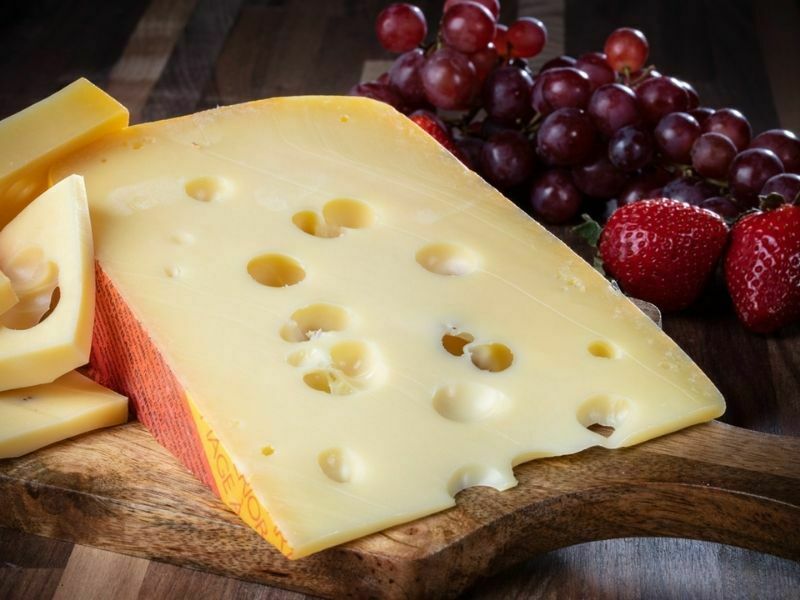
Jarlsberg is a very popular cheese in Norway. It has a strong taste, but is not as strong as Gruyère. The texture of this cheese is thicker than most other cheeses and can be used to make creamy sauces or as a base for dishes when you’re preparing fondue.
You’ll notice that you can use this cheese anywhere that Gruyère would go, but it will have quite a different flavor and stronger taste than your standard Gruyère cheese. Instead of perfecting the recipe with Gruyère like many do, then you should use Jarlsberg if you’re looking for something slightly different. It’s still a good choice for creating fondue, and you might want to go with it if you’re trying to find a cheese that will give you a strong taste without being too strong or overpowering.
#2 Emmental
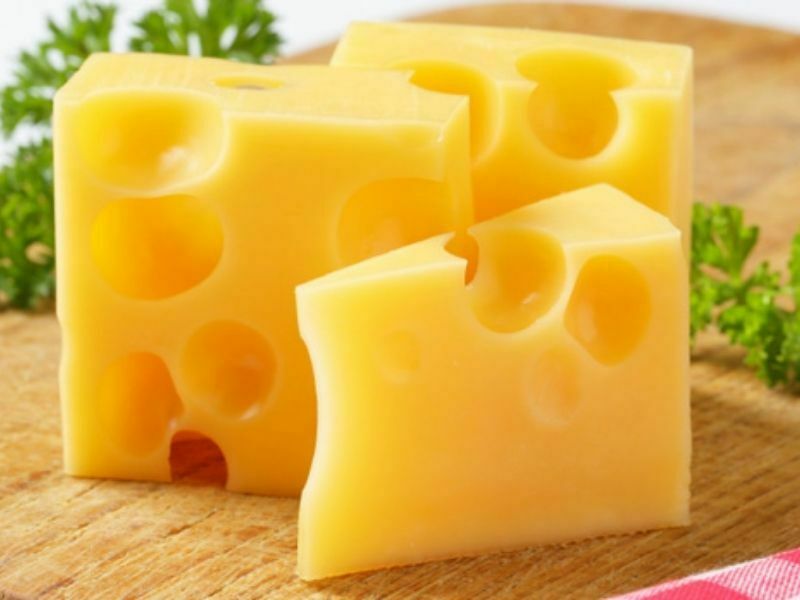
The taste of Emmental and Gruyère is quite similar, with a few key differences. Emmental cheese is less expensive and less pungent. It has been described as bland in comparison to Gruyère, which can be a good thing or bad thing depending on the dish you are preparing.
Emmental cheese hails from the Canton of Bern in Switzerland, much like Jarlsberg. This Swiss cheese is made with whole milk that’s cultured by bacteria and warmed to allow it to begin curdling. After that’s done, the curds are drained and formed into a wheel shape, which they will form throughout the aging process.
This cheese is used in a few different ways. It works excellent melted in soups, on sandwiches or with crackers, and in gratins. Emmental is one of the most widely used cheeses available to consumers today. If you are looking for an affordable and pungent cheese that’s just slightly different than Gruyère, try Emmental cheese.
#3 American Swiss Cheese
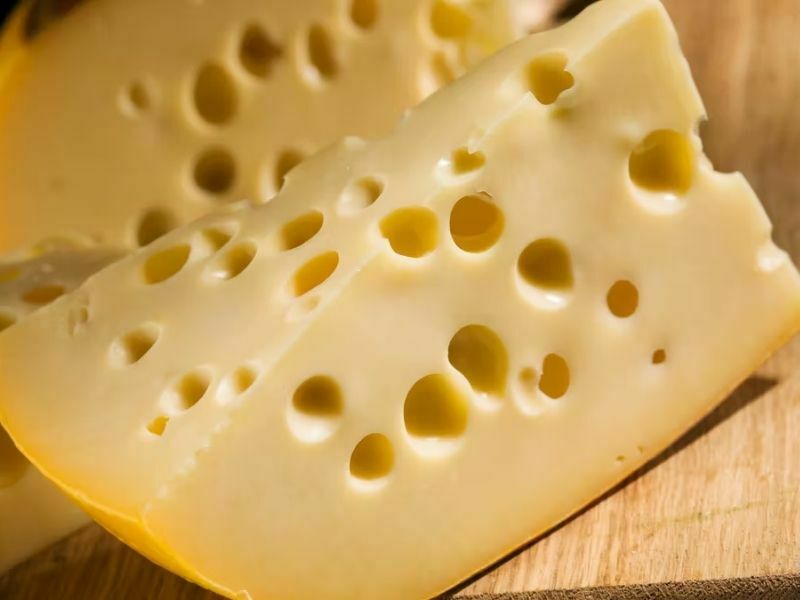
If you’re not opposed to a processed cheese sauce, American Swiss Cheese will work as a decent replacement for Gruyère AOP. American Swiss has nearly become extinct in Switzerland due to the high amount of regulations placed upon it by the government there. This cheese is made by spreading a paste over the curd, aging the cheese, and then using natural mold to form a hard yellow rind.
For your American Swiss Cheese needs, you’re going to need to make sure it has been aged long enough. If you’re purchasing American Swiss on the shelf and eating it as soon as it comes out of the package, you will be disappointed as this cheese will lack flavor.
#4 Raclette Cheese
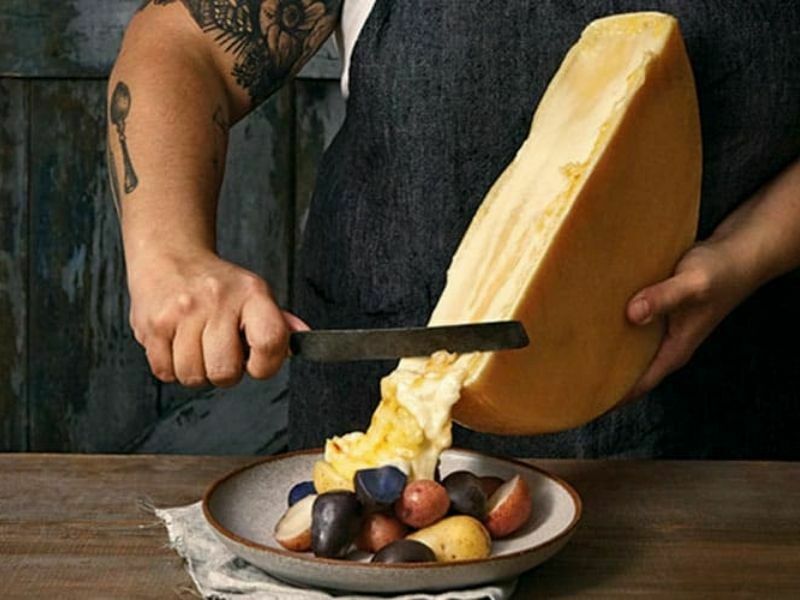
The original source for Raclette cheese comes from France. However, today it is produced in Switzerland and is packaged in a windowless metal box that resembles an oven with shiny bricks at either end of the raclettes. This cheese is aged in a cave with dry air to make the cheese dry and hard.
This is a very difficult cheese to substitute in your cooking, as it is only comparable to Gruyère. The taste of Raclette is that of a mature, nutty and full-bodied cheese with a nice sweet finish. This can be used as an excellent replacement for Gruyère AOP whenever you have the need for a melting cheese. You’ll have no problem creating delicious fondues or raclettes of your own when using this method.
#5 Graviera Cheese
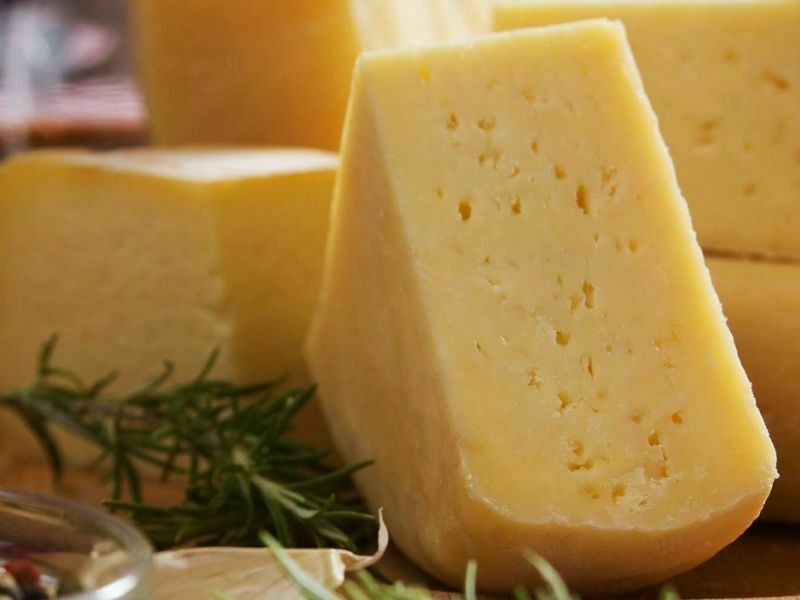
Graviera Cheese works well as a substitute for Gruyère when you’re making fondue or want something with similar characteristics. This is one of the more popular Swiss cheeses in the United States, as many people have discovered its unique flavor.
Another reason to consider this cheese is that it’s a bit sweeter than Gruyère. This can be good or bad depending on what you’re serving with it. It would be great with fruits and cakes, but could be too sweet for some dishes. Just like Emmental cheese, there are certain things that you should avoid making with Graviera Cheese. Remember to always use high quality washed and seasoned cheese cloth or other protective cloth when preparing this recipe or your fondue will have a strong odor and taste of cheesecloth itself.
#6 Dubliner Cheese
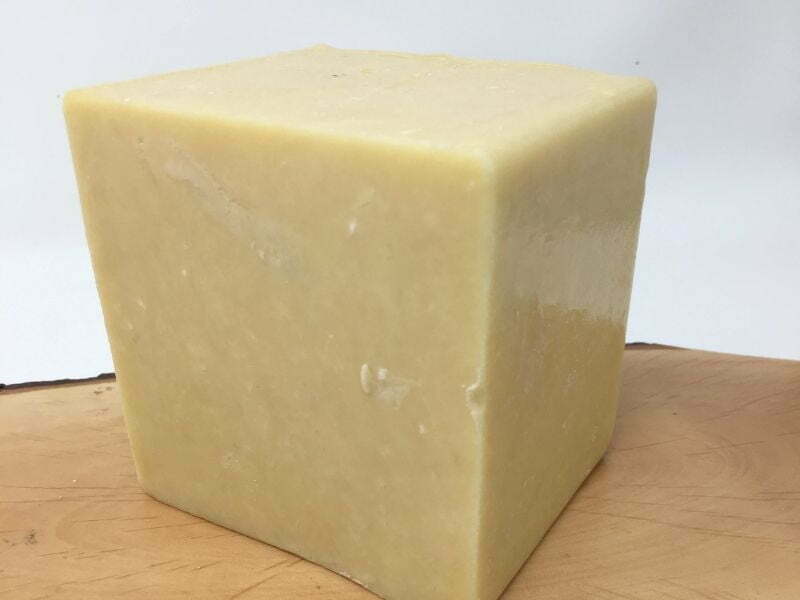
Dubliner cheese is similar to Gruyère in that it has a nutty taste to it and works well when melted over foods, including omelets and fondue. The difference between the two is the texture and the aging process. Dubliner cheese is a bit firmer in texture, with a pale yellow color that’s dotted with small brown spots.
The texture of Dubliner will be more similar to parmesan than Gruyère. This can be either good or bad depending on your needs. It might be too strong to melt over your favorite dish, but perfect for sprinkling on top of an omelet or baked potato.
#7 Wensleydale Cheese
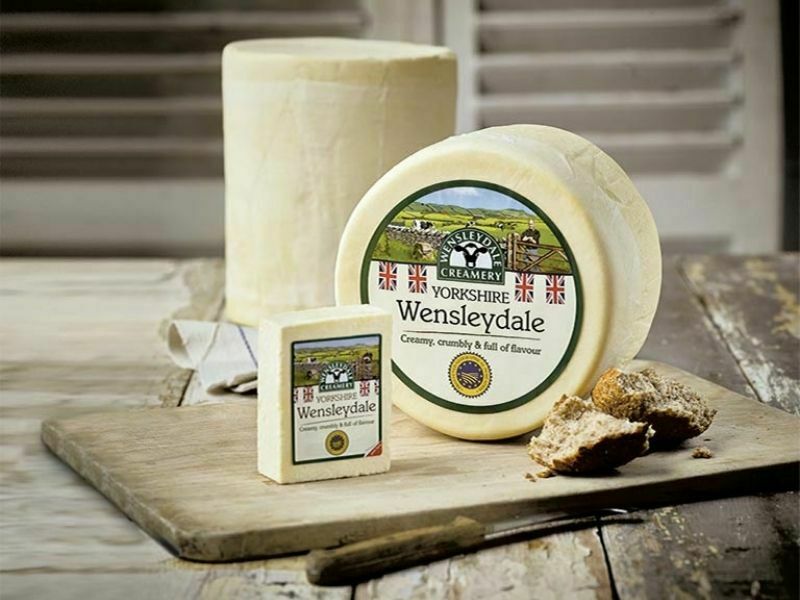
Wensleydale cheese is an excellent substitute for Gruyère, especially when the cheese is being melted. For the best effect with this cheese substitution, you should melt it over toast with some eggs or on top of omelets or fondue. It has a similar taste to Gruyère, but is usually less expensive and can be found at most grocers in your area.
This type of Swiss cheese is produced in Yorkshire, England and was originally made from skimmed milk from the same farm where it was produced. Instead of aging the cheese in a cave, Wensleydale is aged in a cellar for up to two years.
#8 Comté Cheese
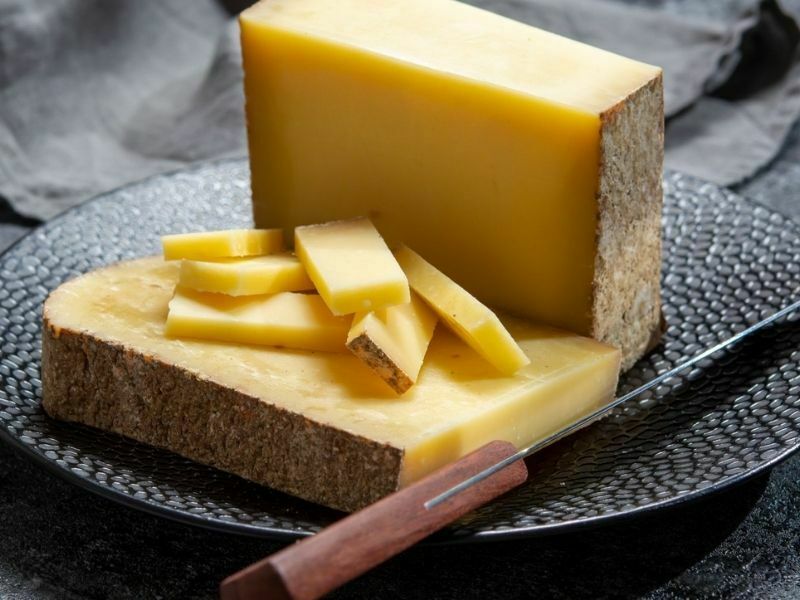
Comté Cheese is a nutty and creamy cheese that can be used as a good Gruyère replacement. This cheese comes from the same area as Gruyère, but was introduced in the mid-19th century. It is known for its waxy rind and smooth taste.
The soft cheeses, like Comté, have flavors that do not pair well with other soft cheeses like Camembert and Brie. Their flavors are too dominant to mix together for most people’s tastes. But when choosing this cheese as an alternative for Gruyère AOP, you won’t have any problems enjoying your meal with it. If you have the choice to use Comté cheese for your recipe, then go for it.
#9 Beaufort Cheese
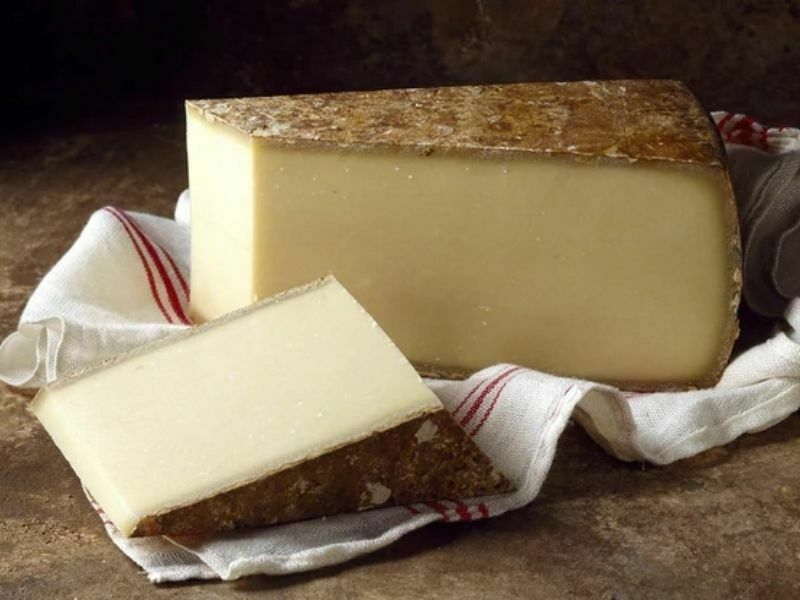
Beaufort Cheese is a good alternative to Gruyère when you are creating fondue or cooking in a casserole. It takes its name from the small town in France where it originated and was named after the mountain range that can be seen from the town.
When Beaufort first hit the market it was only available in wheels. The cheese itself is pale yellow with an ivory colored rind that has dark patches on it, which is a result of being waxed during production. Before you slice into this cheese, you should wait at least one month for it to reach optimal flavor. Be sure to purchase Beaufort Cheese with a rind for better results when making fondue or hot dishes.
#10 Fontina and Parmesan Cheese
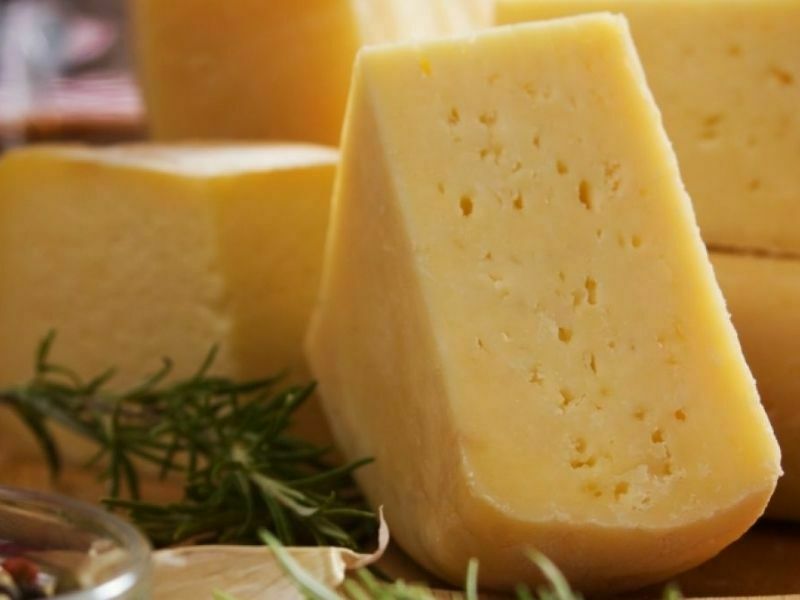
If you’re looking for a cheese that is similar to Gruyère, but has a milder taste, then Fontina and Parmesan are great options. These cheeses are also made in the same area as Gruyère, so you’re not going to get a lot of differences in the two of them. They both have an aged rind up until about 15 days before the cut is sold.
This could be good news if you want your steak or pasta dish with Gruyère cheese to retain its distinctive taste, but want to reduce its strong nutty taste. These cheeses are also good substitutes for Emmental cheese if you’re looking for a milder, nutty taste.
#11 Maasdam or Edam Cheese
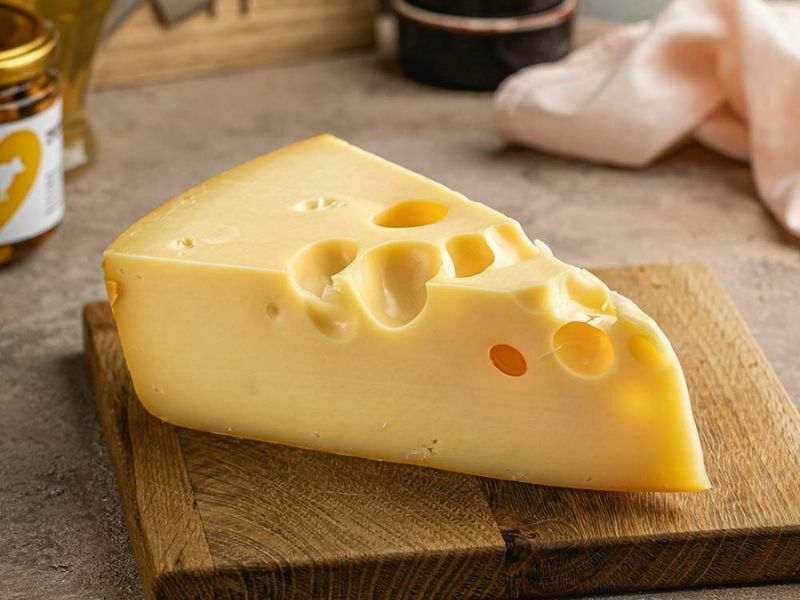
If you’re looking for a milder version of Gruyère, then this Dutch cheese is a good choice. One advantage to the Maasdam is that it has a stronger yellow color than Gruyère and can be found in North America in more than one form.
You could use this cheese as an alternative to Gruyère when you’re making fondue, or just eating it on its own without any other food. It will be similar in flavor, but doesn’t have quite the same nutty flavor that some prefer. It can work well in a variety of foods, but will be less noticeable when you’re cooking with it. The other benefit of the Maasdam is that it melts well. If you’re making fondue or cooking a fondue dish, then this is one of your best choices to go with.
How to Make Gruyère Style Cheese at Home
Conclusion
There are plenty of Swiss, French, and even other international cheeses that will make a delicious substitute for gruyere cheese when used in many recipes or when paired with certain wines. You can often find these at your local supermarket or at smaller gourmet markets if they aren’t already pre-packaged and sold. Adding one to your collection is a great way to expand your cheese repertoire, even if you’re not looking to cook with it on a daily basis.





